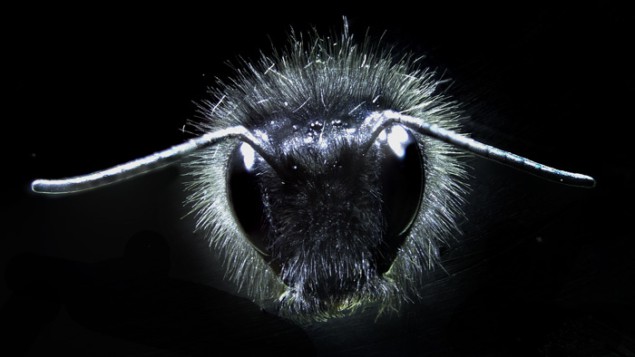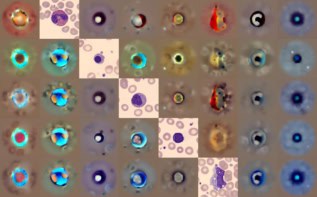
The bumble-bee uses its distinctive yellow-and-black fuzz to sense weak electric fields. This is the conclusion of scientists in the UK, who have shown that the bee’s tiny hairs move in response to electrostatic fields – causing a neural response in the insects. The team also found that the insect’s antennae move in the presence of electric fields, but surprisingly, the researchers were unable to detect a neural response. Commenting on the research, other scientists say that this work is fundamental to understanding the complex behaviour of bees, whose relatively simple neural network serves as inspiration for machine-learning algorithms.
To do their experiments, biologist Gregory Sutton and colleagues at the University of Bristol used wax to secure a live bumble-bee onto a post made of clay. The bee is held 1 cm away from a steel disc that has 400 V applied to it in 1 s pulses. This caused the bumble-bee’s fine hairs to wiggle back and forth and this motion was measured using a technique called laser Doppler vibrometry. This involves aiming laser light at the hairs and measuring the wavelength of the reflected light – which is Doppler-shifted upon reflection from a moving object.
Knowing the hair’s motion, the team could calculate how far the hairs are deflected by the electric field. Then, by inserting a tiny sharp needle into the base of a hair, the researchers were able to detect the electrical signal from neurons responding to the motion of the hair.
Hair-raising surprise
Sutton says he was surprised that the hairs alone were responsible for the bee’s detection of electric fields. The team’s original guess – now refuted by its work – was that the neural response to the electric field came from the insect’s antennae. “We made over five hundred different attempts to get the antennae to respond to the electric field,” he says. “We could not do it.” Nor did the researchers find the wings or feet sensitive to the field, so they concluded that the hairs were responsible for electric-field sensing, or electroreception.
This latest work follows the group’s 2013 study, in which the researchers discovered that bumble-bees can sense electric fields. This electrosensory capability is believed to help the insects to navigate toward flowers, with each type of flower having a distinctive electric-field pattern.
“When a bee leaves a hive for the first time, it doesn’t know what a flower looks like,” Sutton says. “So when a bee encounters its first flower, it takes the bee forever to figure out how to get pollen and nectar from it.” Being able to sense the electric fields allows bees to target known flower types to avoid having to re-learn the mechanics of feeding.
Electric advertisement
“The flower is advertising itself just like Coca-Cola does – by appealing to multiple senses,” Sutton says. “It’s ridiculously easy to pick out your favourite soda, even when there’s an entire wall of sodas,” he says. “It’s not just the name of the soda, it’s also the colour, the shape of the bottle, and when we touch it, it can have a different texture,” he says. In the same way, to the bee, the flower has its own colour, odour, taste – and electric-field pattern.
Research on bees’ sensory abilities is fundamental to understanding their behaviour, says Mathieu Lihoreau, a biologist at the Université Paul Sabatier in France, who was not involved in the research. “Three years ago we did not know that bees use electric fields to learn about their environments,” he says. “It’s becoming clear that this is something important.” Bees are interesting models for researching cognition because although their brains consist of only a million neurons – 100,000 times smaller than a human – they can complete complicated tasks such as communicating with each other. Robot decision algorithms have been inspired by bee behaviour, Lihoreau says.
Lihoreau points out that another important question is whether technology-related electric fields interfere with the bumble-bees’ senses. Sutton and colleagues have shown that the resonant frequency of bumble-bee fuzz is about 4 kHz, which is much lower than common communication frequencies. However, Sutton says it’s impossible to know the impact of technology on bees without experimental evidence. “This is a sufficiently important question that I’m uncomfortable speculating without data at my fingertips,” he says.
The work is described in Proceedings of the National Academy of Sciences.



